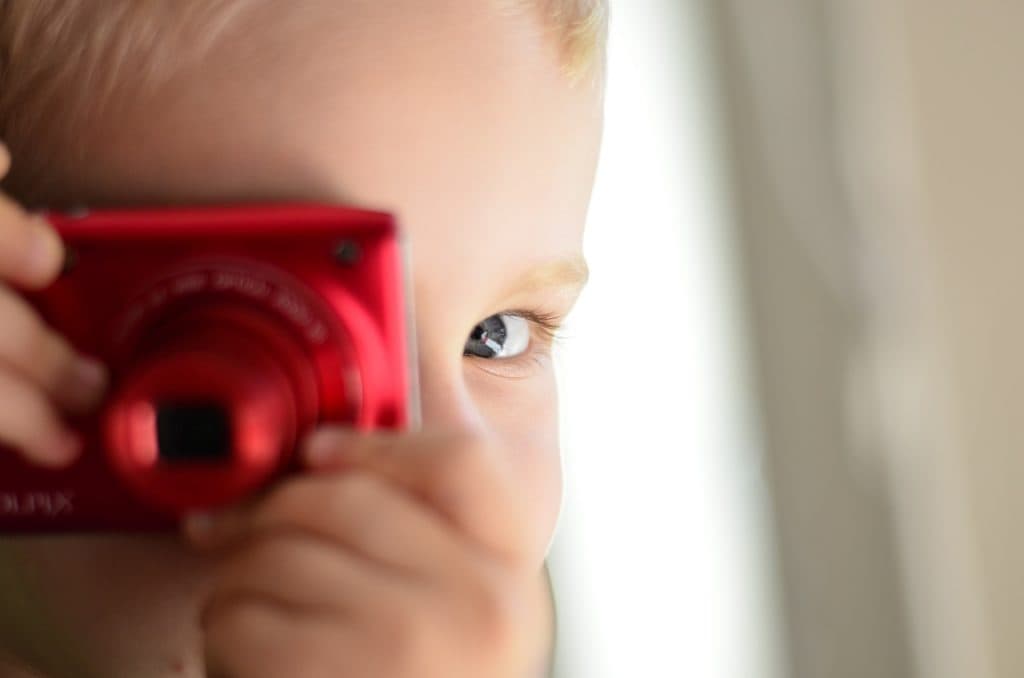Amblyopia, commonly known as a “lazy eye”, is a neuro-developmental vision condition that begins in early childhood, usually before age eight.
Lazy eye develops when one eye is unable to achieve normal visual acuity, causing blurry vision in the affected eye, even with corrective eyewear. The condition also commonly presents with poor depth perception and reading difficulties.
According to research, amblyopia affects up to 1 in 33 of the population— this means up to 10 million people in the U.S. may have a lazy eye.
Amblyopia is the most prevalent neuro-developmental vision condition that affects the vision of up to three percent of the population. While the condition typically presents in early childhood, a lazy eye can develop later on in life as well.
What causes amblyopia?
Amblyopia is diagnosed when the neural connections between the lazy eye and the brain have been affected. A healthy eye-brain connection can be compared to a multi-lane highway —the eye sends visual signals to the brain to be interpreted, and the brain sends signals back to the eye to enable clear vision.
However, in the case of amblyopia, the “highway” does not work as a multi-lane road due to a disconnect in the visual pathways. Therefore, the connection between the brain and the lazy eye may present similar to a one-lane street, or even a walking track.
Is there a critical period in amblyopia?
The “critical” period of visual development begins from birth and continues until around six years of age— when the maturation of the nerves connecting the brain and eyes are developing rapidly. During this time, anything that interferes with this new innervation can cause a lazy eye, as it prevents the simultaneous use of both eyes together (binocular vision), which can cause total suppression of one eye.
Risk factors
Factors associated with increased risk of lazy eye include:
- Premature birth
- Small birth weight
- Family history of lazy eye
- Developmental delays
Vision conditions that may cause lazy eye
- Refractive amblyopia is the most common form of amblyopia. It can be divided into two types:
- Isoametropia is a significantly high, but equal optical prescription in both eyes.
- Anisometropia is a significant difference in eyeglass prescription (i.e. nearsightedness, farsightedness, astigmatism) between the two eyes.
- Constant strabismus is a constant noticeable turn of one eye in any direction. An inward turn of the eye (esotropia) is the most common. Amblyopia resulting from strabismus can be easier to detect because the noticeable eye turn alerts to a vision problem.
- Ocular obstruction can result from any physical blockage of vision, such as a cataract, trauma, lid droop (ptosis), or blocked tear duct.
Congenital disorders and vitamin A deficiency are less common causes of lazy eye.
A lazy eye can develop as a result of the conditions listed above, however, the true underlying cause of lazy eye is a reaction in the brain, called suppression.
Suppression occurs when the brain actively ignores all of the visual information coming from one eye to avoid blurry or double vision (diplopia). Suppression can cause serious consequences and can lead to an eye turn, also known as strabismus.
Symptoms of lazy eye
Parents and children often have a difficult time recognizing a lazy eye because the condition usually develops in one eye, and may not present with a noticeable eye turn. Also, children generally learn how to ignore the lazy eye and compensate by using the other eye.
It is therefore important to schedule an eye exam if you notice any of the following signs or symptoms:
- Shutting one eye or squinting
- Rubbing eyes often
- Poor eye-hand coordination
- Tripping often or accident prone
- Poor depth perception
- Difficulty with fine eye movements
- Reduced reading speed and comprehension
- Poor eye focusing skills, or inability to follow an object with just the eyes
- A cross-eyed appearance
- Unusual eye movements such as flickering or blinking
Contact an eye doctor near you to diagnosed and treated your child’s lazy eye so that they have clear and comfortable vision.
SEE RELATED: Bifocals for Lazy Eye
How is lazy eye diagnosed?
Comprehensive eye exams are highly recommended for all infants and pre-school children to confirm healthy vision development and to rule out any ocular conditions.
Moreover, if there is a family history of lazy eye, it is crucial that your child be examined regularly, as lazy eye can be an inherited condition.
Specific tests are used during eye exams to assess both the visual acuity and the visual skills of each eye— enabling your doctor to diagnose a condition such as lazy eye.
Tests of visual skills allow your doctor to assess how well each eye is performing individually and identify an effective eye-brain connection.
Be prepared that during the exam, your doctor may administer dilating eye drops into your child’s eyes to enable a better view of the inner ocular structures. These eye drops will temporarily blur your child’s vision, and may sting for a few moments. Even though they are uncomfortable, the drops are an extremely effective way for detecting the existence of lazy eye or other serious eye conditions.
Vision therapy for lazy eye
Vision therapy is an effective treatment method for amblyopia.
Vision therapy has been shown to greatly improve the visual skills of the lazy eye by re-training the visual system.
Through vision therapy, the two eyes will be trained to work together to achieve clear and comfortable binocular vision.
Some vision therapy programs to treat amblyopia may include:
- Accommodation (focusing)
- Fixation (visual gaze)
- Saccades (switching eye focus, “eye jumps”)
- Pursuits (eye-tracking)
- Spatial skills (eye-hand coordination)
- Stereopsis (3-D vision)
Recent Pediatric Eye Disease Investigator Group (PEDIG) research has disproven the long-held belief that the most effective treatment for lazy eye is full-time eye patching and daily administration of atropine drops.
This research indicated that patching for just a few hours per day and involving active vision therapy, is just as effective as full-time patching. This research has revolutionized patient compliance and treatment satisfaction.
Is vision therapy effective for adults with lazy eye?
Recent studies have shown that the neural pathways of the brain can be enhanced at any age— this means that a lazy eye can actually be treated at any age, even into adulthood. Vision therapy for adults can be very effective but might take longer to achieve the optimum results. Of course, the earlier the condition is diagnosed, the better the outcome usually is.
The final step towards success
If your child is diagnosed with lazy eye, your eye doctor will likely recommend a personalized program of vision therapy, with or without eye patching or atropine drops.
LEARN MORE: Vision Therapy for Lazy Eye
Schedule an appointment with your eye doctor for a complete eye exam, and to discuss any questions you may have about treating amblyopia.
Vision therapy has been proven effective in the treatment of lazy eye and the improvement of the visual skills necessary for binocular vision.










